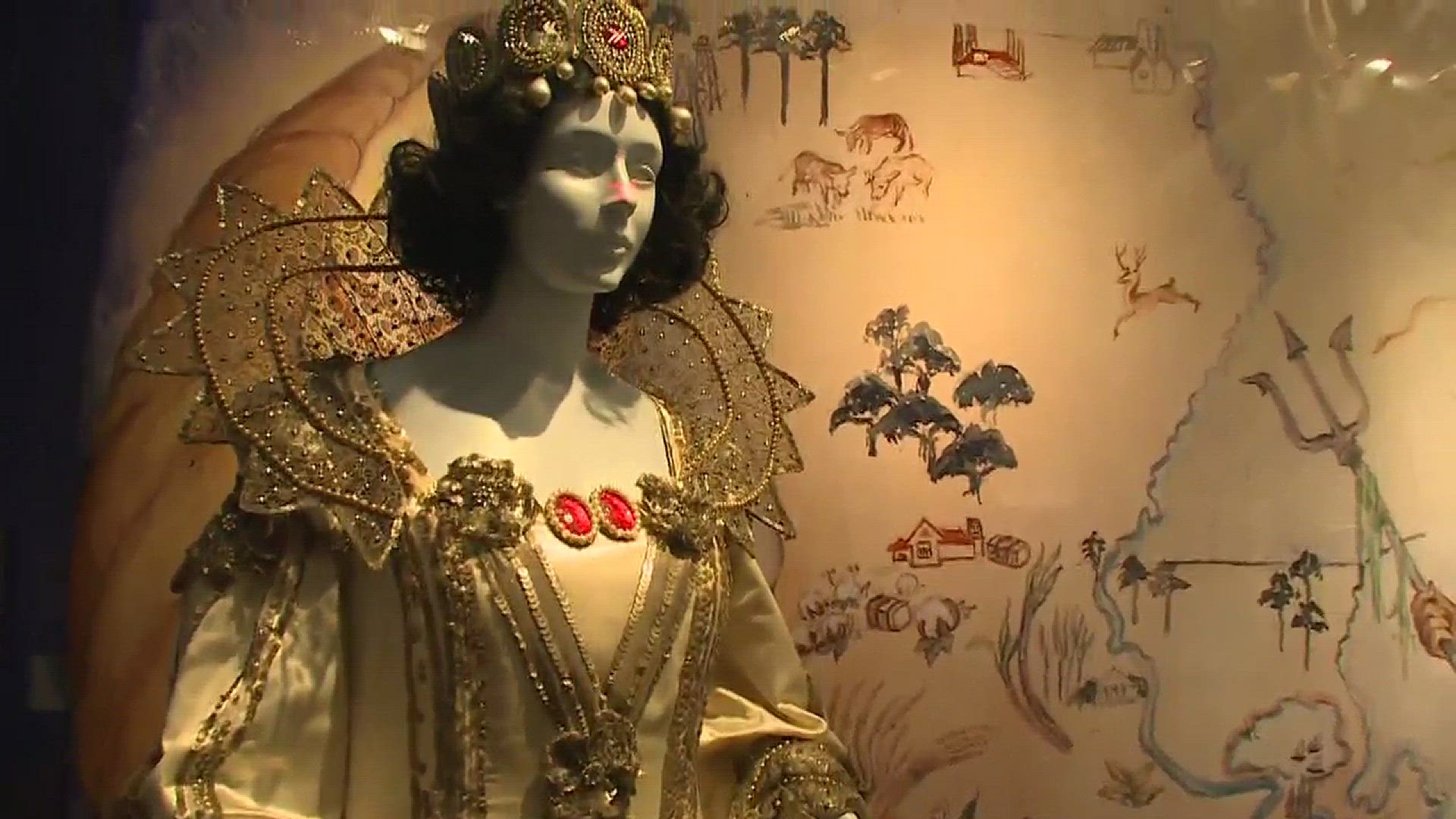The women of Muses famously throw shoes and the ladies of Nyx decorate purses. Both krewes present popular parades that tout an all-female membership in the thousands. But there’s a good chance neither would be what they are without Aminthe Nungesser.
"Who's she?" you may be asking. Her name may not be familiar, but the two women’s krewes she founded – Iris and the now-defunct krewe of Venus – hold an important role in Carnival history as the first two all-female parades.
Mrs. Nungesser was the founding captain of Iris in 1917, founding it originally as a ball-only krewe. In 1941, she and other members decided it was time for women to do what their male counterparts had done for nearly 85 years and stage a parade on the streets. Nungesser and friends founded the Krewe of Venus. Then in 1959, Iris began presenting a street parade as well.
A new exhibit at the Louisiana State Museum’s Presbytere on Jackson Square honors the history of both krewes, as well as a few of their 19th century predecessors and their 20th and 21st century successors. The exhibit, Iris and the Goddesses of Carnival, commemorates the centennial of Iris and explores the evolution of women’s krewes in New Orleans from the 1890s to the present. It is on display now through Dec. 2018.
The exhibit rightly points out that women have played a role in Carnival since the earliest celebrations in colonial Louisiana. That includes working as float designers and costume designers for many of the old-line Carnival krewes. And of course what’s a king without his queen and court? Women have made up the royal courts of Carnival krewes since the earliest days as well. But Iris, which parades on the Saturday before Mardi Gras, is given the most attention in the exhibit, as the oldest woman’s Carnival organization in the city and the krewe celebrating its centennial this year.
“It’s important to realize that Iris, as the longest-surviving krewe, was founded in 1917 at a time when women didn’t even have the right to vote, so there’s a lot of important political and social history wrapped up in the history of this one Carnival krewe,” said Wayne Phillips, a curator of the exhibit and of the Louisiana State Museum’s Carnival collection. “Given that Iris has been around for a lot longer than most of the other women’s krewes, they really set the standard for those who have come afterward,” said Phillips. “You can’t deny the impact of Iris when you look at the growth of women’s krewes over the past 50 years.”
Memorabilia, art and costumes tell the story of the female krewes, including Muses (which first paraded in 2001) and Nyx (which rolled for the first time in 2012), as well as the newer African-American female organizations, Athena and Femme Fatale, and several suburban krewes that no longer parade. There is even a queen’s dress from the lesbian krewe of Ishtar, which presented Carnival balls for a few years in the 1980s.
Many of the costumes on display are from the Louisiana State Museum’s large permanent collection. One spectacular costume is on loan from Arnaud’s Restaurant, the Iris queen’s gown worn by Irma Cazenave, queen of Iris 1941 and the wife of restaurant founder Count Arnaud Cazenave. The costume that is on display, which depicts Queen Elizabeth I, is the oldest known Iris queen’s costume in existence.
“I think there’s been a great respect for the art of costume design among these women,” said Phillips.
While the exhibit rightly gives credit to Iris for leading the way in the 20th century, the exhibit also highlights the next generation – including that krewe (whose current captain is the granddaughter and great-grand niece of two former Iris captains.) Other displays honor the newer krewes, complete with Muses shoes and float sketches and art, and Nyx purses and ball gowns and costumes.
“What’s fun about the new generation of krewes is that they found their own way of doing it. Even though Iris is a more traditional krewe, organizations like Muses and Nyx have found a new way to add to the celebration,” Phillips said.
----
The exhibit, Iris and the Goddesses of Carnival, is on display now through Dec. 2018 at the Louisiana State Museum's Presbytere, 751 Chartres St. at Jackson Square. It is included in the museum's permanent exhibit on Carnival. Hours are Tuesday-Sunday, 10 a.m. - 4:30 p.m. Admission is $6, $5 for seniors and military.

